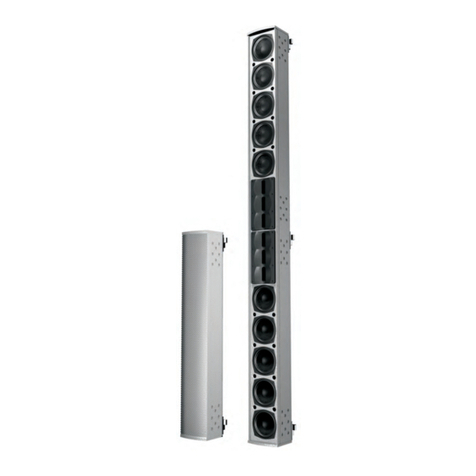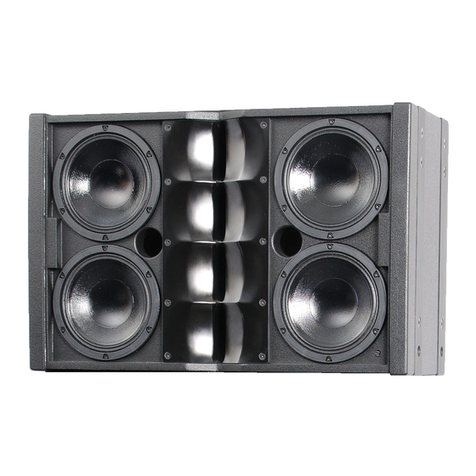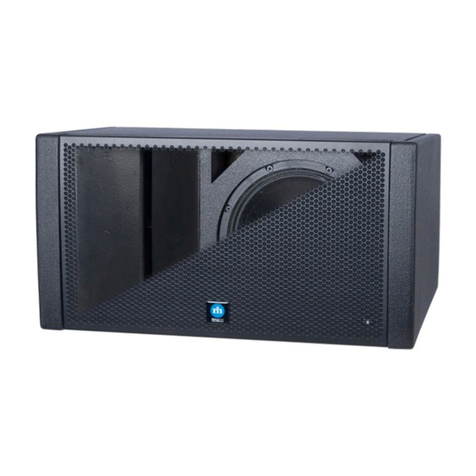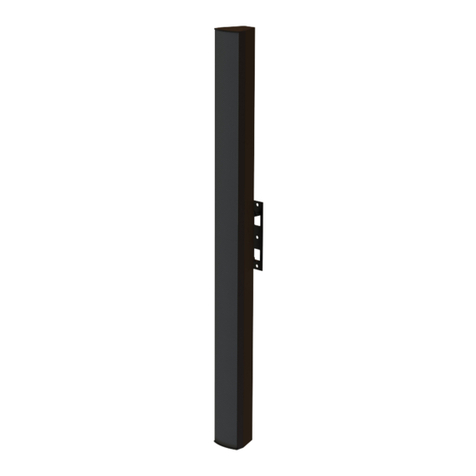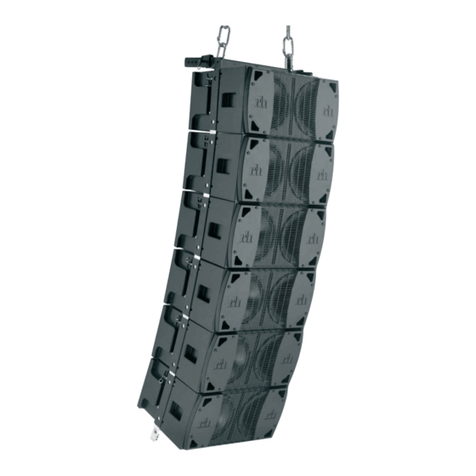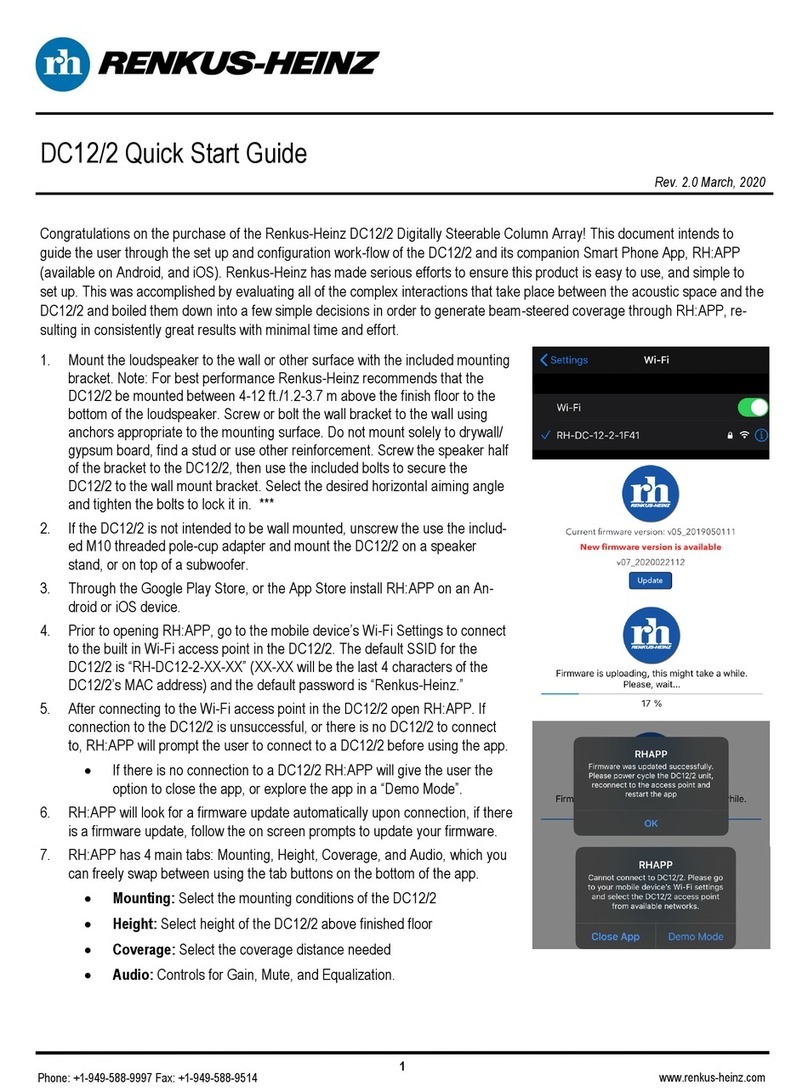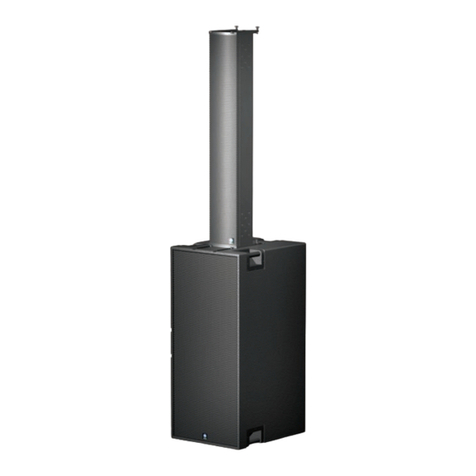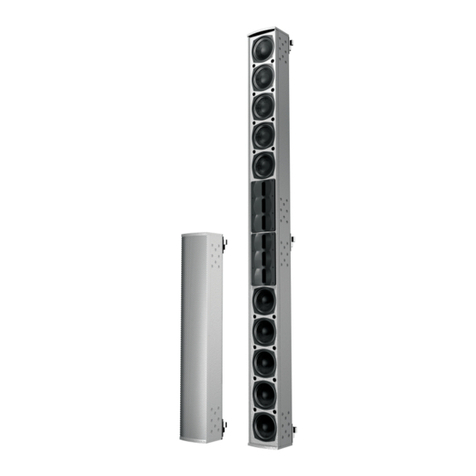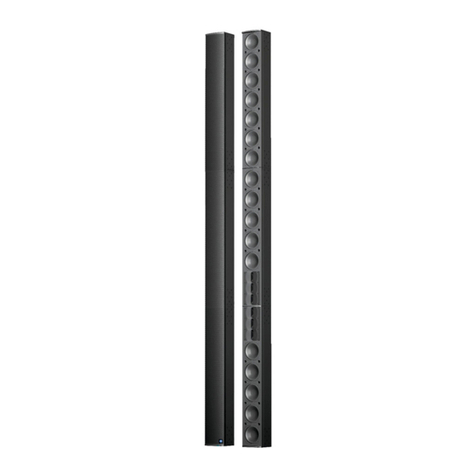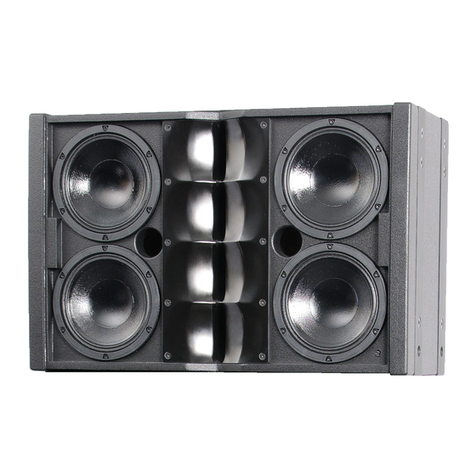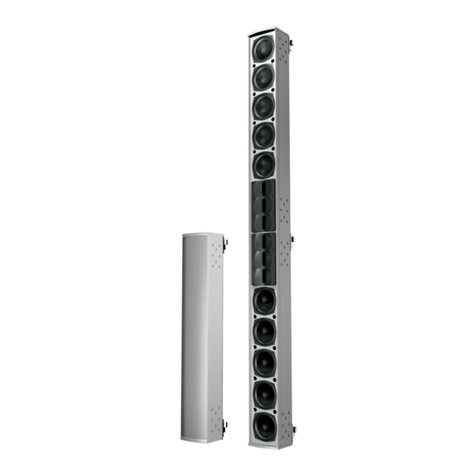
CAUTION
To reiterate the above warnings: servicing instructions are for
use by qualified personnel only. To avoid electric shock, do
not perform any servicing other than that contained in the Ope-
ration Instructions unless you are qualified to do so. Refer all
servicing to qualified personnel.
Eindrigliche Warnung: Wartungsvorschriften dienen nur der
Benutzung durch qualifizieres Personal. Zur Vermeidung eines
elektrischen Schlages keine anderen als die in den Betriebsvor-
schriften beschriebenen Wartungsarbeiten ausführen, es sei denn
Sie sind dafür qualifiziert. Wartungsarbeiten auszuführen.
The lightning flash with arrowhead symbol,
within an equilateral triangle, is intended to
alert the use to the presence of uninsulated
"Dangerous Voltage" within the product's en-
closure that may be of sufficient magnitude
to constitute a risk of electric shock to hu-
mans.
The exclamanation point, within an equilateral
presence of important operating and mainte-
nance (servicing) instructions in the literature
accompanying the product.
VORSICHT
RISK OF ELECTRONIC SHOCK:
OPEN ONLY IF QUALIFIED AS
SERVICE PERSONNEL
GEFAHR EINES ELEKTRISCHEN SCHLAGES:
NUR VON QUALIFIZIEREM WARTUNGSPERSONAL
ZU ÖFFNEN
Der Blitz mit nach untenzielendem Pfeil in
einem gleichseitigen Dreieck weist den
Benutzer auf das Vorhandensein einer
unisolierten, "gefährlichen Spannung" im
Gehäuse hin, die stark genug sein kann, einer
Person einen gefährlichen elektrischen Schlag
zu versetzen.
Das Ausrufezeichen in einem gleichseitigen
Dreieck weist den Benutzer auf wichtige
Betriebs- und Wartungsvorschriften in den
beiliegenden Unterlagen des Gerätes hin.
Erklärung der graphischen SymboleExplanation of Graphical Symbols
IMPORTANT
Your Iconyx teerable Column Loudspeaker contains no user-serviceable parts and all service should be referred to
qualified service personnel.
22
Users Manual
IMPORTANT AFETY IN TRUCTION
12. The AC Power Cord is the AC Mains disconnect.
13. Only use attachments/accessories specified by the manufac-
turer.
14. Disconnect this apparatus during lightning storms or when
unused for long periods of time.
15. Refer all servicing to qualified service personnel. Servicing is
required when the apparatus has been damaged in any way,
such as power-supply cord or plug is damaged, liquid has
been spilled or objects have fallen into the apparatus, the
apparatus has been exposed to rain or moisture, does not
operate normally, or has been dropped.
“WARNING - TO REDUCE THE RI K OF FIRE OR ELECTRIC
HOCK, DO NOT EXPO E THI APPARATU TO RAIN OR
MOI TURE”
“CAUTION: THE E ERVICING IN TRUCTION ARE FOR
U E BY QUALIFIED ERVICE PER ONNEL ONLY. TO
REDUCE THE RI K OF ELECTRIC HOCK DO NOT PER-
FORM ANY ERVICING OTHER THAN THAT CONTAINED IN
THE OPERATING IN TRUCTION UNLE YOU ARE QUALI-
FIED TO DO O”.
1. Read these instructions.
2. Keep these instructions.
3. Heed all warnings.
4. ollow all instructions
5. Do not use this apparatus near water. The apparatus shall not
be exposed to dripping or splashing and no objects filled with
liquids, such as vases, shall be placed on it.
6. Clean only with dry cloth.
7. Do not block any ventilation openings. Install in accordance
with the manufacturer’s instructions.
8. Do not install near any heat sources such as radiators, heat
registers, stoves, or other apparatus (including amplifiers) that
produce heat.
9. Do not defeat the safety purpose of the polarized or ground-
ing-type plug. A polarized plug has two blades with one wider
than the other. A grounding type plug has two blades and a
third grounding prong. The wide blade or the third prong is
provided for your safety. If the provided plug does not fit into
your outlet, consult an electrician for replacement of the obso-
lete outlet.
10. Protect the power cord from being walked on or pinched par-
ticularly at plugs, convenience receptacles, and the point
where they exit from the apparatus.
11. Make sure the power cord remains readily accessible at all
times.

